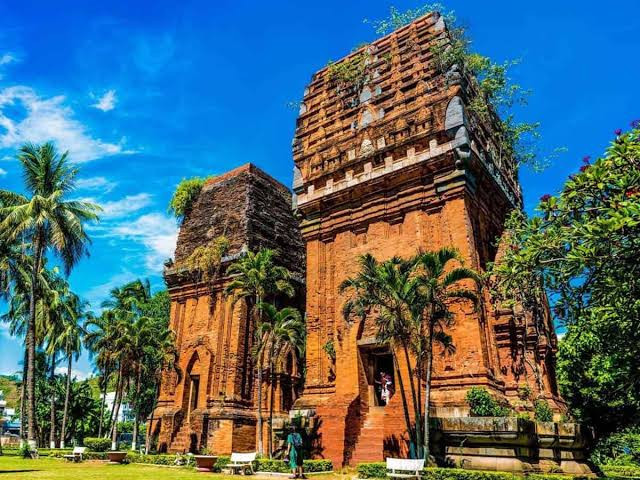
Pasha notes that the Twin Towers were constructed in the late 12th to early 13th century and showcase distinctive Khmer architectural features. Like many other Cham towers, each structure in the Twin Towers has a single entrance facing east.
Despite being nearly a millennium old, the Twin Towers have remained remarkably well-preserved, withstanding the test of time and the elements. The unique materials and architectural techniques used in their construction have allowed the towers to endure natural disasters, including severe storms.
Originally, the site consisted of three interconnected towers, linked by a winding path. However, over time, only two towers have survived. The northernmost tower collapsed in the 19th century, and a replacement structure, built later, also did not last. Today, the area where the third tower once stood is an overgrown plot of land.
The remaining two towers have been well-preserved, with significant restoration efforts undertaken in the 1960s and again in the 1990s. The latter restoration, carried out between 1990 and 1995, primarily focused on repairing the roofs of the two towers. The sandstone used in the restoration was carefully chosen to match the original material, though visitors can still discern differences between the original architecture and the restored sections.
The architecture of the Twin Towers is described as nearly flawless. A notable feature is the frieze of monkeys that runs along the edge of the walls, culminating in Garuda bird statues at the protruding corners. Unlike other Cham towers, which are typically divided into three levels, the Twin Towers feature a complex system of multiple false tiers.
Each tier is marked at the four corners of the towers by Garuda statues, depicted with bent legs bracing against the corners and outstretched arms seemingly supporting the weight of the upper tiers. Despite prolonged exposure to the salty sea air, the reliefs remain in excellent condition.
The roof of the eastern tower has been reinforced to prevent collapse, though restoration efforts on this structure have been more limited compared to the northern tower. Pasha expressed particular admiration for the solid sandstone Linga-Yoni sculptures enshrined within the Twin Towers.
Fragments of the collapsed tower, including reliefs of dancers and door frames, are well-preserved and currently on display at the Bình Định Museum. These artifacts offer a glimpse into the rich artistic and religious life of the Cham people, showcasing a cultural heritage that continues to be carefully preserved.
The Gulf Observer’s article is a testament to the enduring allure of the Twin Towers, which stand as a symbol of the architectural prowess and cultural richness of the Cham civilization.
Do Le